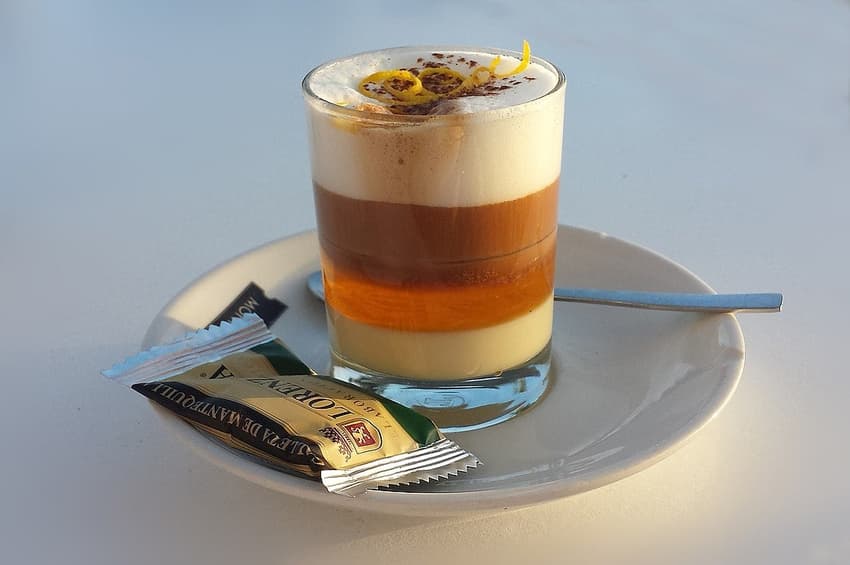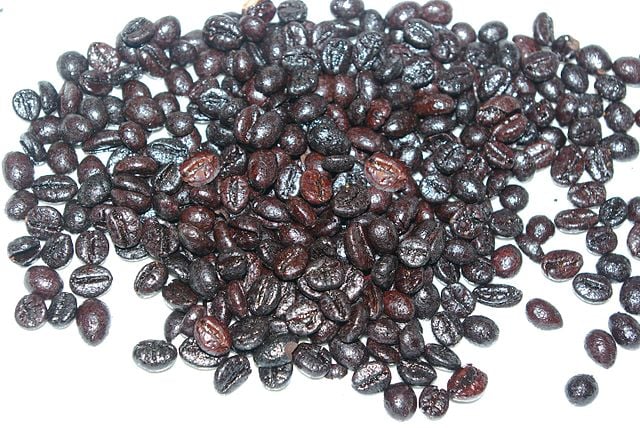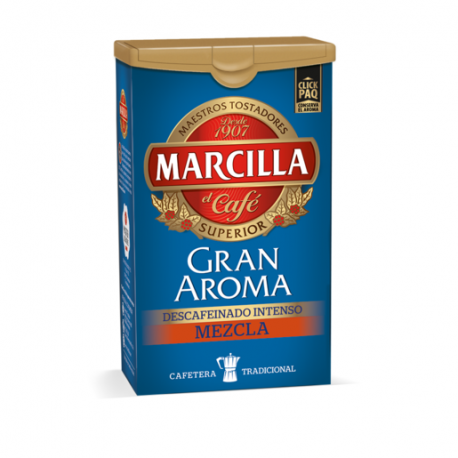Where, when and how to drink coffee like a Spaniard

Spain’s café culture is crammed full of regional idiosyncrasies that make ordering your coffee of choice harder than you might expect. Here’s everything you need to know to get your caffeine fix 'a la española'.
Spanish coffee habits
Spaniards may not be the biggest coffee consumers in the world (a 2023 study by the International Coffee Organisation found they were in 11th place worldwide), but they certainly have the same passion and tradition for café as their Mediterranean counterparts.
In fact, breakfast (first thing rather than mid-morning) for many in Spain consists of only coffee rather than adding any food to the mix. So much for it being the most important meal of the day!
Spaniards tend to prefer to have milk coffee to wake up in the morning and then wait for a stronger brew after lunch or during the afternoon.
It’s also worth noting that coffee is drunk by and large in bars and cafeterías rather than at home. If they’re at work, Spaniards will pop out for a coffee break with their colleagues and if meeting with friends they’re also more likely to sit outdoors at a terraza than invite each other round to their homes for a brew.
It’s fair to say that the ritual and socialising that comes with coffee counts more than actually getting a caffeine fix in Spain.
What kind of coffee do Spaniards drink?
Coffee in Spain is brewed by and large the espresso way. That means that the amount served is generally smaller and less watered down than in northern European countries, but often packs a lot more punch.
That means it’s usually served in small glasses or cups rather than in the kind of big mugs used by Starbucks.
Spanish coffee is unique in that most of it is torrefacto, which means that the coffee grain has 15 percent of  sugar added to it before it is roasted.
sugar added to it before it is roasted.
This gives it a distinctively bitter and stronger taste, even though one might think that it would end up tasting sweeter, as the sugar burns and coats the beans giving them a black sheen.
The torrefacto tradition dates back to the Spanish Civil War as the cost-cutting practice meant the coffee beans were preserved for longer and increased the roast volume.
Even though there are critics who argue it spoils the taste, Spaniards are so used to torrefacto coffee that they’ve come to expect it as the standard.
How do I order a coffee in Spain?
If you’re new to Spanish coffee, don’t assume that the fact that it’s mainly torrefacto will mean you only get a dark, thick and bitter brew every time you order.
There’s a colourful and varied array of regional coffee preparations which we’ll go over in the next section, but you’ll be able to make yourself understood all over Spain with the following general terms:
Café solo: A small cup of strong, black espresso without milk.
Americano: Same as a café solo but with more water to make it less strong
Cortado: A small cup of espresso with a dash of milk
Café con leche: Coffee with milk served in equal amounts
Cappuccino: Same as everywhere else around the world, many bars in Spain will serve them
Carajillo: Coffee with alcohol
If you don’t speak any Spanish, don’t worry too much about uttering anything other than the coffee you want. Saying me pone (give me) before your order will suffice, but no need even to say por favor (politeness isn’t too important among Spanish waiters).
How about ordering coffee in Spain’s different regions?
If you’re feeling a bit more adventurous and want to delve into the coffee culture of your particular region in Spain, here are the most distinctive cafés in different Spanish regions.
Madrid
Café manchado: literally meaning coffee stained with milk, espresso with a dash of leche
Mitad y mitad: Coffee with half hot milk and half cold milk
Café bombón: Espresso with sweetened condensed milk
Canary Islands
Cortado largo: A long short one is the literal name but it’s actually just a cortado with more milk or more coffee, so you have to specify what you want more of.
Barraquito: A cortado with milk and extra condensed milk commonly drunk in Tenerife. It can also be served with cinnamon, a slice of lemon peel and a splash of Licor 43 or Tía María liqueur. If it contains alcohol, a barraquito is often referred to as zaperoco.
Leche y leche: It's a cortado largo with more milk and condensed milk (hence the double leche), similar to a barraquito but usually without the alcohol.
Nunca Mais: On the island of Lanzarote, this coffee references the slogan Nunca Mais (Never Again), used in Spain since the 2002 oil spillage disaster in Galicia. The Nunca Mais is a double dose of expresso, with the moniker no doubt referencing how its dark colour resembles oil.
Murcia
Belmonte: Milk coffee with condensed milk and brandy.
Café asiático: Black coffee with condensed milk and flambéed brandy or rum and a sprinkle of cinnamon.
Balearic Islands
Café caleta: a carajillo coffee with rum and brandy as well as lemon and orange peel. Served in Ibiza.
Rebentó: Carajillo coffee with local rum, served on the island of Majorca.
Valencia
Blanco y negro: Despite it’s simple name (black and white) it’s anything but. It combines iced or frapped espresso coffee with Spanish ice cream or leche merengada (a milkshake made with milk, egg white and sugar).
Mixto: Hot coffee with ice cream, either vanilla or strawberry flavour. It’s also served with horchata, a Spanish tiger nut or almond milk drink.
Nacional or Ruso: Iced coffee topped with vanilla ice cream.
Suspiro horchata: Horchata drink with a splash of coffee.
Tocaet (tocado) Valenciano: Coffee with a few drops of brandy or other liquor.
Suspiro de limón: Iced lemon drink with a dash of coffee.
Galicia
Café con gotas or tocado gallego: Coffee with a splash of orujo grape liqueur.
Celta: coffee with brown sugar, orujo liqueur, a few whole coffee beans and a slice of lemon.
Catalonia
Catalán: coffee with crema catalana, the regional version of crème brûlée (pic below).
Trifásico or tricolor: coffee, brandy and milk.
Cigaló: Carajillo coffee with rum served in a tall glass, somehow gets its name from the word for langoustine, cigala.
Honorable: Coffee and Pujol brand rum.
Perfumat: Coffee and aniseed.
Castilla-La Mancha
Resolí: Local aguardiente moonshine, brandy, sugar, dried orange peel, cinnamon and lastly coffee
Castilla y León
Completo: One coffee, one brandy and one cigar. Lock, stock and barrel.
Basque Country
Ebaki: The Basque name for a cortado coffee. In San Sebastian it’s served as a tall milk coffee with lots of sugar.
Aragón
Soldao: Coffee with Cointreau orange liqueur and soda. Soldao is a shortened version of soldado (soldier in Spanish), presumbably because the concoction is traditionally popular among Zaragoza's regiments.
Quemadillo: Three coffee beans, rum, cinammon, sugar and milk. Quemadillo, meaning 'a bit burnt' in Spanish, refers to the process of burning the whole coffee beans with a flame as they sit in a shot of rum.
Andalusia
Sombra: Translating to shadow, this coffee served in Malaga contains 80 percent milk and 20 percent coffee. In fact, Malaga has its own vernacular for its coffees, so this cheat sheet should help you along.
Watch out for…

If you’re buying coffee at a Spanish supermarket, be aware that some packets are labelled as mezcla (mixture), which basically means that the coffee is blended with chicory or torrefacto. Opt instead for natural if you want unadulterated coffee.
When ordering coffee with milk, ask for leche del tiempo (room temperature milk) or leche templada (warm milk) unless you want it to be piping hot, as the standard practise is for the milk to be almost boiling hot.
Comments (1)
See Also
Spanish coffee habits
Spaniards may not be the biggest coffee consumers in the world (a 2023 study by the International Coffee Organisation found they were in 11th place worldwide), but they certainly have the same passion and tradition for café as their Mediterranean counterparts.
In fact, breakfast (first thing rather than mid-morning) for many in Spain consists of only coffee rather than adding any food to the mix. So much for it being the most important meal of the day!
Spaniards tend to prefer to have milk coffee to wake up in the morning and then wait for a stronger brew after lunch or during the afternoon.
It’s also worth noting that coffee is drunk by and large in bars and cafeterías rather than at home. If they’re at work, Spaniards will pop out for a coffee break with their colleagues and if meeting with friends they’re also more likely to sit outdoors at a terraza than invite each other round to their homes for a brew.
It’s fair to say that the ritual and socialising that comes with coffee counts more than actually getting a caffeine fix in Spain.
What kind of coffee do Spaniards drink?
Coffee in Spain is brewed by and large the espresso way. That means that the amount served is generally smaller and less watered down than in northern European countries, but often packs a lot more punch.
That means it’s usually served in small glasses or cups rather than in the kind of big mugs used by Starbucks.
Spanish coffee is unique in that most of it is torrefacto, which means that the coffee grain has 15 percent of  sugar added to it before it is roasted.
sugar added to it before it is roasted.
This gives it a distinctively bitter and stronger taste, even though one might think that it would end up tasting sweeter, as the sugar burns and coats the beans giving them a black sheen.
The torrefacto tradition dates back to the Spanish Civil War as the cost-cutting practice meant the coffee beans were preserved for longer and increased the roast volume.
Even though there are critics who argue it spoils the taste, Spaniards are so used to torrefacto coffee that they’ve come to expect it as the standard.
How do I order a coffee in Spain?
If you’re new to Spanish coffee, don’t assume that the fact that it’s mainly torrefacto will mean you only get a dark, thick and bitter brew every time you order.
There’s a colourful and varied array of regional coffee preparations which we’ll go over in the next section, but you’ll be able to make yourself understood all over Spain with the following general terms:
Café solo: A small cup of strong, black espresso without milk.
Americano: Same as a café solo but with more water to make it less strong
Cortado: A small cup of espresso with a dash of milk
Café con leche: Coffee with milk served in equal amounts
Cappuccino: Same as everywhere else around the world, many bars in Spain will serve them
Carajillo: Coffee with alcohol
If you don’t speak any Spanish, don’t worry too much about uttering anything other than the coffee you want. Saying me pone (give me) before your order will suffice, but no need even to say por favor (politeness isn’t too important among Spanish waiters).
How about ordering coffee in Spain’s different regions?
If you’re feeling a bit more adventurous and want to delve into the coffee culture of your particular region in Spain, here are the most distinctive cafés in different Spanish regions.
Madrid
Café manchado: literally meaning coffee stained with milk, espresso with a dash of leche
Mitad y mitad: Coffee with half hot milk and half cold milk
Café bombón: Espresso with sweetened condensed milk
Canary Islands
Cortado largo: A long short one is the literal name but it’s actually just a cortado with more milk or more coffee, so you have to specify what you want more of.
Barraquito: A cortado with milk and extra condensed milk commonly drunk in Tenerife. It can also be served with cinnamon, a slice of lemon peel and a splash of Licor 43 or Tía María liqueur. If it contains alcohol, a barraquito is often referred to as zaperoco.
Leche y leche: It's a cortado largo with more milk and condensed milk (hence the double leche), similar to a barraquito but usually without the alcohol.
Nunca Mais: On the island of Lanzarote, this coffee references the slogan Nunca Mais (Never Again), used in Spain since the 2002 oil spillage disaster in Galicia. The Nunca Mais is a double dose of expresso, with the moniker no doubt referencing how its dark colour resembles oil.
Murcia
Belmonte: Milk coffee with condensed milk and brandy.
Café asiático: Black coffee with condensed milk and flambéed brandy or rum and a sprinkle of cinnamon.
Balearic Islands
Café caleta: a carajillo coffee with rum and brandy as well as lemon and orange peel. Served in Ibiza.
Rebentó: Carajillo coffee with local rum, served on the island of Majorca.
Valencia
Blanco y negro: Despite it’s simple name (black and white) it’s anything but. It combines iced or frapped espresso coffee with Spanish ice cream or leche merengada (a milkshake made with milk, egg white and sugar).
Mixto: Hot coffee with ice cream, either vanilla or strawberry flavour. It’s also served with horchata, a Spanish tiger nut or almond milk drink.
Nacional or Ruso: Iced coffee topped with vanilla ice cream.
Suspiro horchata: Horchata drink with a splash of coffee.
Tocaet (tocado) Valenciano: Coffee with a few drops of brandy or other liquor.
Suspiro de limón: Iced lemon drink with a dash of coffee.
Galicia
Café con gotas or tocado gallego: Coffee with a splash of orujo grape liqueur.
Celta: coffee with brown sugar, orujo liqueur, a few whole coffee beans and a slice of lemon.
Catalonia
Catalán: coffee with crema catalana, the regional version of crème brûlée (pic below).
Trifásico or tricolor: coffee, brandy and milk.
Cigaló: Carajillo coffee with rum served in a tall glass, somehow gets its name from the word for langoustine, cigala.
Honorable: Coffee and Pujol brand rum.
Perfumat: Coffee and aniseed.
Castilla-La Mancha
Resolí: Local aguardiente moonshine, brandy, sugar, dried orange peel, cinnamon and lastly coffee
Castilla y León
Completo: One coffee, one brandy and one cigar. Lock, stock and barrel.
Basque Country
Ebaki: The Basque name for a cortado coffee. In San Sebastian it’s served as a tall milk coffee with lots of sugar.
Aragón
Soldao: Coffee with Cointreau orange liqueur and soda. Soldao is a shortened version of soldado (soldier in Spanish), presumbably because the concoction is traditionally popular among Zaragoza's regiments.
Quemadillo: Three coffee beans, rum, cinammon, sugar and milk. Quemadillo, meaning 'a bit burnt' in Spanish, refers to the process of burning the whole coffee beans with a flame as they sit in a shot of rum.
Andalusia
Sombra: Translating to shadow, this coffee served in Malaga contains 80 percent milk and 20 percent coffee. In fact, Malaga has its own vernacular for its coffees, so this cheat sheet should help you along.
Watch out for…

If you’re buying coffee at a Spanish supermarket, be aware that some packets are labelled as mezcla (mixture), which basically means that the coffee is blended with chicory or torrefacto. Opt instead for natural if you want unadulterated coffee.
When ordering coffee with milk, ask for leche del tiempo (room temperature milk) or leche templada (warm milk) unless you want it to be piping hot, as the standard practise is for the milk to be almost boiling hot.
Join the conversation in our comments section below. Share your own views and experience and if you have a question or suggestion for our journalists then email us at [email protected].
Please keep comments civil, constructive and on topic – and make sure to read our terms of use before getting involved.
Please log in here to leave a comment.